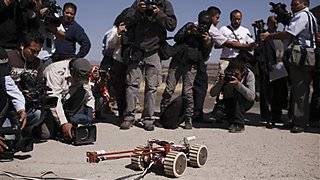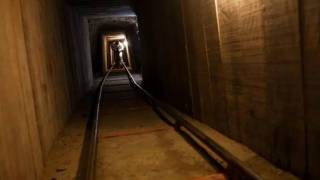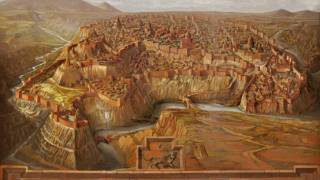Mexico Uses Robot to Explore Ancient Tunnel
Source: abcnews.go.com
The first robotic exploration of a pre-Hispanic ruin in Mexico has revealed that a 2,000-year-old tunnel under a temple at the famed Teotihuacan ruins has a perfectly carved arch roof and appears stable enough to enter, archaeologists announced Wednesday.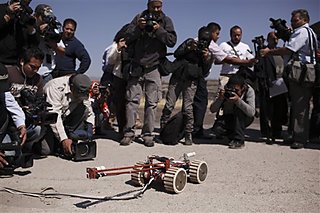
Press photographers make photos of a robot used to explore the ruins in Teotihuacan, Mexico, Wednesday, Nov. 10, 2010. The small foot-wide wheeled vehicle, able to record video, entered a 2,000-year-old tunnel found earlier this year under the ruins of the temples of Teotihuacan.
(AP Photo/Alexandre Meneghini) (AP)
Archaeologists lowered the remote-controlled, camera-equipped vehicle into the 12-foot-wide (4-meter) corridor and sent wheeling through it to see if it was safe for researchers to enter. The one-foot (30-cm) wide robot was called "Tlaloque 1" after the Aztec rain god.
The grainy footage shot by the robot was presented Wednesday by Mexico’s National Institute of Anthropology and History. It shows a narrow, open space left after the tunnel was intentionally closed off between A.D. 200 and 250 and filled with debris nearly to the roof.
Archaeologist Sergio Gomez says the footage showed the arched-roof tunnel was an example of sophisticated work by the ancient inhabitants of Teotihuacan, which is located just north of modern Mexico City.
"All of the passage, more than 100 meters (yards) long was excavated in the rock perfectly, and in some places you can even see the marks of the tools the people of Teotihuacan used to make it," said Gomez.
Well-worked blocks and a smoothly-arched ceiling showed the tunnel was not natural, but rather a man-made structure that researchers believe lead to possible burial chambers.
Researchers hope to clear the debris blocking the tunnel’s mouth and enter passageway by late November or early December.

A robot used to explore ruins in Teotihuacan, Mexico, sits on the ground Wednesday, Nov. 10, 2010. The small foot-wide wheeled vehicle, able to record video, entered a 2,000-year-old tunnel found earlier this year under the ruins of the temples of Teotihuacan.
(AP Photo/Alexandre Meneghini) (AP)
Robots have been used before in Egypt. In 2002, a robotic vehicle was used to discover a hidden door and chamber in the Great Pyramid built by the pharaoh Khufu more than 4,000 years ago.
But the INAH, as Mexico’s archaeology agency is known, said it appeared to be the first robotic exploration in Mexico and probably in the Americas.
After excavating a vertical shaft that leads to the tunnel entrance, the mouth of the passageway was discovered in July. Ground-penetrating scanner images showed that the passageway lies 40 feet (12 meters) below the surface, and runs beneath the Temple of Quetzacoatl, in the central ceremonial area of the ruins.
The scanner images appear to show chambers that branch off the tunnel and archaeologists think they may hold the tombs of some of the ancient city’s early rulers.
Experts say a tomb discovery would be significant because the social structure of Teotihuacan remains a mystery after nearly 100 years of archaeological exploration at the site, which is best known for the towering Pyramids of the Moon and the Sun.
No depiction of a ruler, or the tomb of a monarch, has ever been found, setting the metropolis apart from other pre-Hispanic cultures that deified their rulers.
Vertical excavations begun in 2009 to reach the mouth of the tunnel suggest it was a ruler’s tomb, Gomez said. Rich offerings were tossed into the tunnel at the moment it was closed up, including almost 50,000 objects of jade, stone, shell and pottery, including ceramic beakers of a kind never found before at the site.
The complex of pyramids, plazas, temples and avenues was once the center of a city of more than 100,000 inhabitants and may have been the largest and most influential city in pre-Hispanic North America at the time.
But nearly 2,500 years after the city was founded — and about 2,100 years after the Teotihuacan culture began to flourish there — the identity of its rulers remains a mystery. The city was abandoned by the time the Aztecs arrived in the area in the 1300s and gave it the name "Teotihuacan," which means "the place where men become gods."
Article from: abcnews.go.com
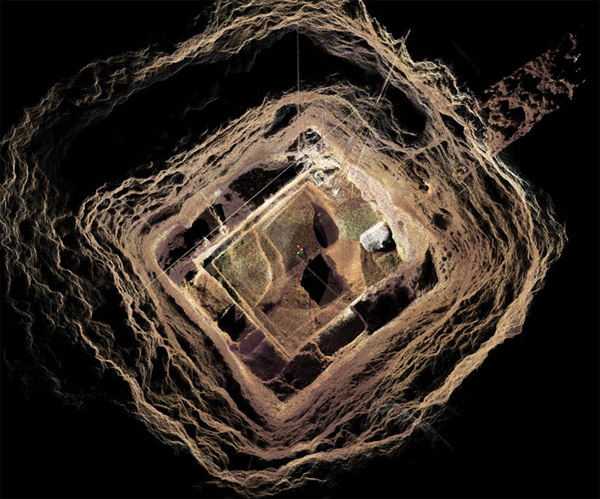
Contextual image of the tunnel found in front of the Temple of the Feathered Serpent. Photo: CNMH INAH.
Also tune into:
Richard Sauder - Underground Bases and Tunnels
Kathleen McErlain - Too Many Secrets, Humanity’s Fight to Expose The Secret Underground Worlds
Andrew Collins - Beneath The Pyramids, Giza Cave System Rediscovered
Robert Temple - Egyptian Dawn & The Osiris Shaft
Robert Temple & Olivia Temple - Egyptian Dawn, Undiscovered Tombs & Egypt Today
Andrew Collins - Egypt’s Underworld, Tomb of the Birds, Cave of the Snake & Secret Excavation Rumors
Klaus Schmidt - Göbekli Tepe: The World’s Oldest Temple?
Hugh Newman - Megalithomania(cs) & Megalithic Mesoamerica
Hugh Newman - The Olmecs & Megalithic Cultures
